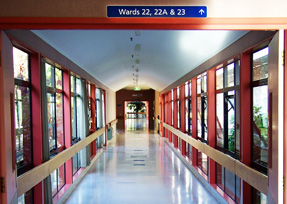Patterns of energy consumption in hospitals:
Lighting can account for 25% of the energy consumption in a hospital. Lighting in hospitals can be a matter of life and death at some times and at other times, if not checked, can be sheer wastage. Water and laundry also account for a little less than 30% of energy consumed in hospitals. Taking energy saving measures and steps to improve efficiency levels of current processes and fittings can help hospitals cut down on their overall energy expenditure and spend the savings on other crucial areas. Here are few tips to save on energy bills for lighting and water.
Lighting:
- The easiest way to cut on lighting expenditure is to switch to compact fluorescent light bulbs. These are ideal for patient rooms, lobbies and hallways. Where this is not possible, low wattage bulbs should be used.
- Lighting should be controlled with timers and motion sensors to optimize their use. This is crucial especially in areas that are not being used frequently. Motion sensors should be installed in offices, laundry and house keeping. Lighting controls can help to automatically dim lights where natural daylight is available.
- T –12 features should be replaced with T-8 fixtures or T-5 fixtures with electronic ballasts.
- Exit signs at all doors can be replaced with signs made of light emitting diodes which consume less electricity.
- The amount of light in patient rooms can be increased if translucent light shades are installed. Natural light can be tapped effectively by providing light colored décor and light color shades.
Laundry and Water:
- Old washing machines should be replaced with more energy efficient models.
- Pools or hot tubs should be enclosed with a cover when not in use. The ideal energy efficient method of heating water for such applications is by using a solar heater.
- When doing laundry, full load cycles are a must. A partially loaded wash tends to waste on resources.
- Cold water laundry saves on energy consumption and should be used when ever possible. Using ‘ozonated’ water is considered to more efficient, wash times with ozonated water are 40% faster due to the lack of wash and rinse cycles as they are substituted with chemical treatments.
- Installing low flow fixtures on faucets in toilets and examining rooms will help reduce water consumption in hospitals. Installing ultra low flush toilets will also help in reducing water consumption.
- Piping should be regularly checked for leaks and fixed as soon as possible. Sink aerators should be checked and faulty ones replaced.
- Water spent on landscaping can be reduced by opting for more drought resistant plants. Mowed lawns can be replaced with natural ground cover to save on watering costs.
...Read more
Close
















